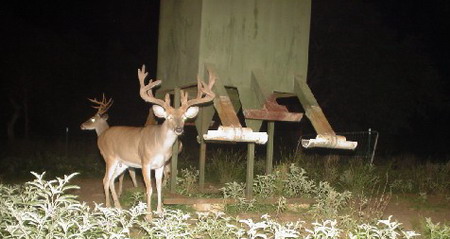Managing the habitat for proper nutrition should be the primary management goal. Supplemental feeding and/or planting of food plots are not a substitute for good habitat management. These practices should only be considered as "supplements" to the native habitat, not as "cure-alls" for low quality and/or poorly managed habitats.
To be most beneficial, supplemental feeding in particular needs to be integrated into an overall deer population and habitat management program that maintains the range in good condition. Feeding programs which provide sufficient additional nutrients to be of value to deer are expensive and take a long term commitment.
Although corn is commonly used as a supplemental feed, it is one of the poorest types of deer feed available and it should not be used as the only source of supplemental feed. Its low protein level (7-10%) is not adequate for the development of bone and muscle, especially at times when the protein levels of native forages is also low. The preferred method is to use a 16% to 20% protein pelleted commercial feed, fed free choice, from feeders distributed at the rate of at least one feeder per 300 acres located within or adjacent to adequate escape cover. Continue reading “Supplemental Feeding of Whitetail Deer”
